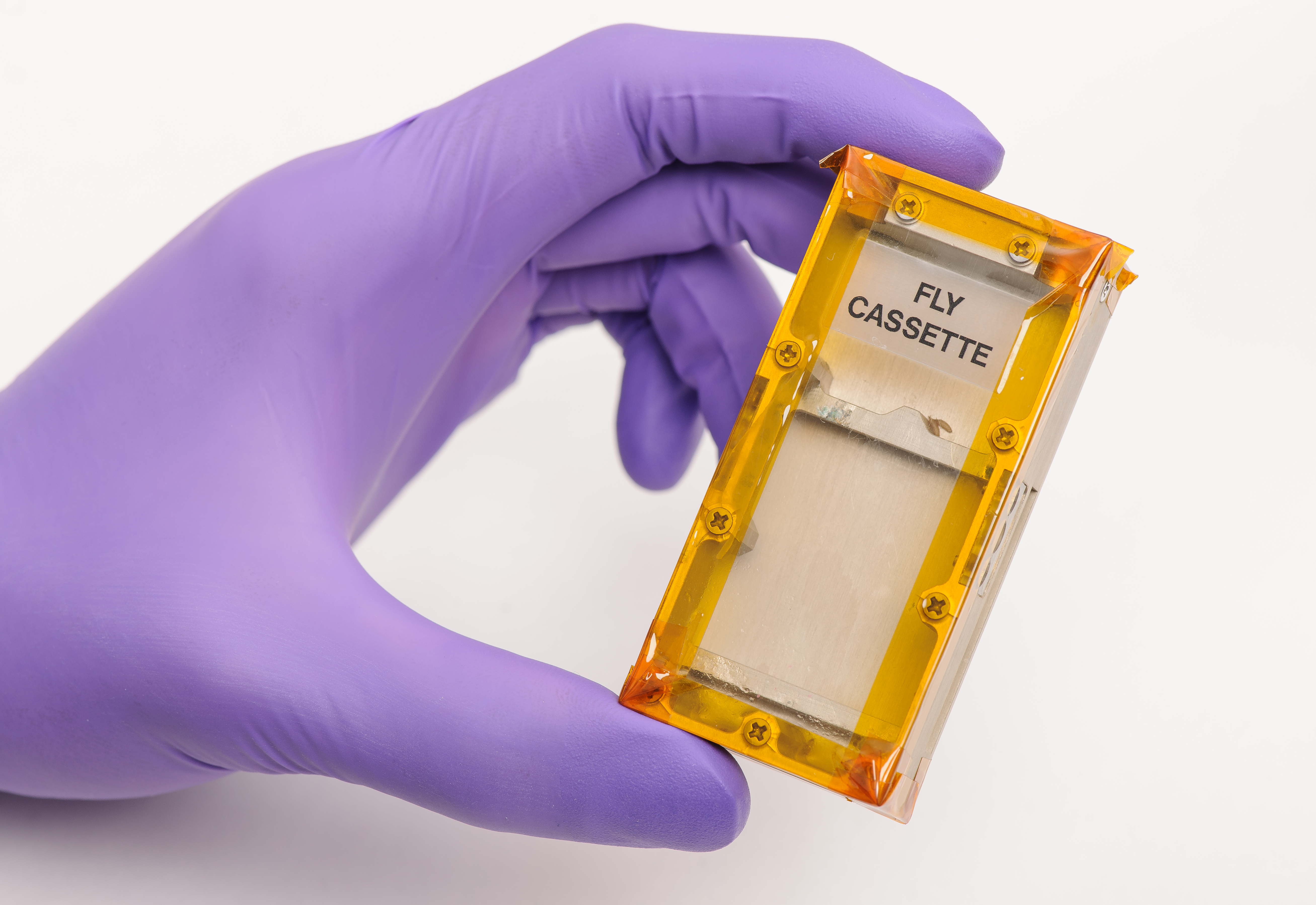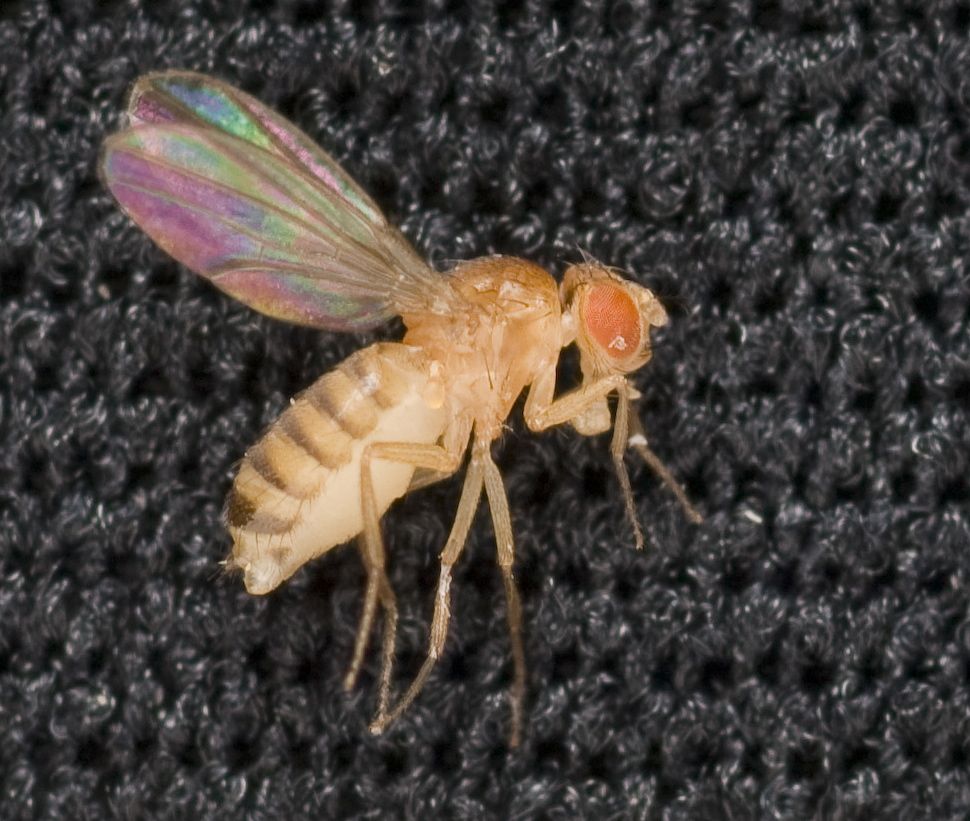Fruit Fly Lab

Overview
The research focus of Fruit Fly Lab is on the effects of the spaceflight environment on biological systems, specifically the Central Nervous System (CNS). We use a well-established and powerful genetic and spaceflight model organism, Drosophila melanogaster (fruit fly).
Current Projects:
- Integrated physiological responses of CNS and muscle in Drosophila and C. elegans along a gravity continuum (Space Biology funded)
- Sex-specific physiological and transcriptomic CNS responses to combined effects of spaceflight stressors in Drosophila melanogaster (Space Biology funded)
Past Projects:
- Neuro-signatures: Early developmental epigenomic, transcriptomic, and proteomic alterations during spaceflight in Drosophila melanogaster (NASA Ames Research Innovation Award)
- MVP-Fly-01 (SpaceX CRS-14) https://www.nasa.gov/ames/research/space-biosciences/mvp-spacex-14
News:
Artificial Gravity Provides Partial Protection for Biology in Space
Lab members:
Janani S. Iyer, Ph.D. Scientist, USRA, KBR/Wyle
Siddhita D. Mhatre, Ph.D. Senior Scientist, KBR/Wyle
Steffy N. Tabares Ruiz, B.S., Blue Marble Space Institute of Sciences
Amber M. Paul, Ph.D, Postdoctoral Fellow, USRA (Former)
Rachel Gilbert, Ph.D, Postdoctoral Fellow, USRA (Former)
Tommy Wyneimko, B.S, SLSTP Intern (Former)
Anisha Prabhu, B.S., SLSTP Intern (Former)
NASA’s Fruit Fly Lab provides a research platform aboard the International Space Station for long-duration fruit fly–Drosophila melanogaster–studies in space. The system has three major components. The first is the Fly Cassette that will house and safely transport fruit flies to the space station. The second is the Food Changeout Platform that will be used periodically to provide the flies with fresh food while maintaining containment and allowing extraction of fruit fly eggs, embryos and larvae for preservation. The third is the Observation and Lighting System to allow fly behavior monitoring and exposure to an artificial day/night cycle.
Aboard the space station, the hardware will be installed on the NanoRacks Platform 3 BioRack in Express Rack 4, located in the Japanese Experiment Module. The NanoRacks facility will house the Cassettes and provide artificial gravity.
The first Fruit Fly Lab mission, FFL-01, is scheduled to launch to the space station in 2014.
Components
The Fly Cassette consists of an aluminum body that has a slot through which a Food Tray is inserted. The Cassette lid is made of transparent polycarbonate plastic (Lexan.) The sides of the Cassettes include holes for ventilation that are covered with a stainless steel mesh to prevent flies and larvae from escaping.
The Observation and Lighting Unit houses a video camera and LED lights to both record fly behavior and also generate an artificial day/night cycle. Each Observation and Lighting Units holds one Fly Cassette. The video camera can record images of the flies through the transparent lid of the Cassette, providing behaviorial data to researchers. The Observation and Lighting Unit contains LED lights to simulate daylight. Infrared LED lights allow monitoring of the flies under dark conditions. The Observation and Lighting Units that house the Fly Cassettes are inserted in the BioRack and the BioRack centrifuge to run experiments that include side-by-side exposure of Cassettes to microgravity and 1 g (simulated Earth gravity.) The system can accommodate a total of 12 Cassettes for one experimental run with as many as six of the Cassettes on the centrifuge and six of the Cassettes on the microgravity rack.
The Food Changeout Platform Kit is used to exchange food trays while maintaining containment of Drosophila. The kit is comprised of 3 elements:
- Food Changeout Platform
- A new food tray, filled with fresh fly food
- T-bar (for pushing food trays through the slots)
The platform is fabricated from Delrin and Lexan. It allows transfer of food trays from one Fly Cassette to another by a series of operational steps performed by station crew while continuously providing containment of Drosophila.The T-bar is tethered to the Platform by a cord. The T-Bar is used to push a fresh food tray into a Fly Cassette while simultaneously pushing the spent food tray out the opposite side of the Cassette. The Platform Kit is stowed in a resealable polyethylene bag.
Station crew will conduct food tray change out operations as required by the experiment design. At the time of the food tray change out, the food tray exposed to the adult flies in each Cassette will contain Drosophila eggs, embryos, and larvae. The procedure consists of transferring a new food tray into the fly cassette that carries the adult flies and then transferring the food tray with the larvae into a new, unused fly cassette that is subsequently frozen. The Platform Kit provides containment during this operation; no additional containment is required.
































